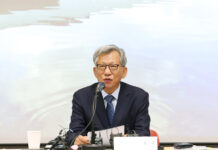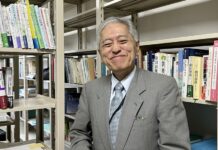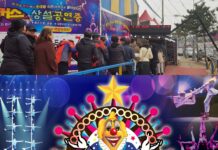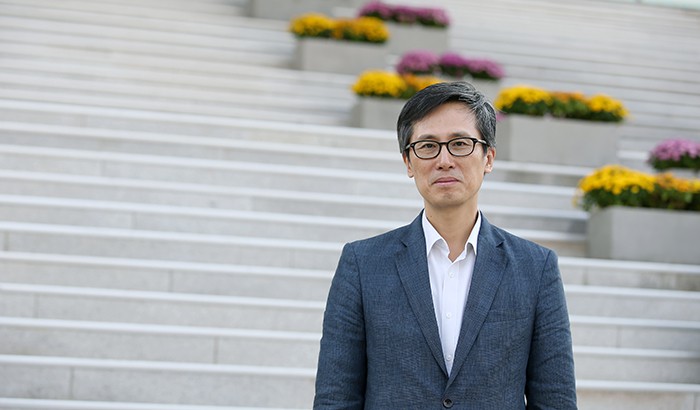
Director General of the National Hangeul Museum Moon Young-ho emphasizes the importance of widening the understanding of Hangeul among people through the systemic preservation of Hangeul data and through exhibits.
Marking the 569th anniversary this year of the proclamation of the Korean alphabet Hangeul, the National Hangeul Museum is in the media spotlight these days as it enters its second year.
Since its opening on Oct. 9 last year, the museum has held a series of special exhibits, including its opening exhibit “King Sejong the Great Opens the Age of Hangeul Culture” and then the “Read Society Through its Hangeul Letters,” “Hangeul in Novels” and “A New Name in a Digital World, Code-Named_Hangeul: D55CD AE00” exhibits. Through these shows, the museum has provided opportunities to people to reflect upon their alphabet from a wide range of views, ranging from the past to the present.
Marking its first anniversary this year, Director General Moon Young-ho of the National Hangeul Museum said, “The existence of a museum can make many changes.” He expressed his desire to meet the public’s expectations by securing more Hangeul historic artifacts and developing various educational programs.
In regard to the museum’s existing collection of Hangeul artifacts, Moon said, “In the beginning we had difficulty securing some relics. As more people have gotten to know about the opening of the museum, however, these days we’re receiving more enquiries about donating relics.”
“Donating precious artifacts that people have collected over their lifetime is a highly respectable act. Thanks to the opening of the museum, we can preserve and manage such remains in a systematic manner,” he added.
Korea.net met with Director General Moon and learned more about the progress and meaning of the museum and its future direction.
– What meaning does the opening of the National Hangeul Museum have?
The mission of a museum is to collect and preserve data and records that hold value, and to offer and share them in the interest of the public through education. If we apply this to the National Hangeul Museum, we can say that the museum should collect and preserve information about and examples of Hangeul in a systematic manner, and enhance knowledge and understanding of the alphabet through exhibits and educational programs in order to contribute to the development of the country.
Though Hangeul has a 569-year history, many of the written script’s samples are damaged or gone. We have a very poor management system. Though our ancestors were very good at recording and managing records, we are not good enough to preserve such data, especially items from modern times. For example, we can’t find anymore the 1.0 version of a particular piece of Hangeul word processing software or the first-ever Hangeul typewriter from 1914. In this regard, our role will be to collect and sort out such data in an organized manner, such as at the National Hangeul Museum.
The National Hangeul Museum can also use its data and historical artifacts for research. This is an irreplaceable role of a museum that the public sector cannot fill. Another important role of the museum is to show the actual artifacts to the public in exhibits, and raise understanding of Hangeul and the history of Hangeul among ordinary people. The opening of the National Hangeul Museum has enabled us to play such a role to the full.
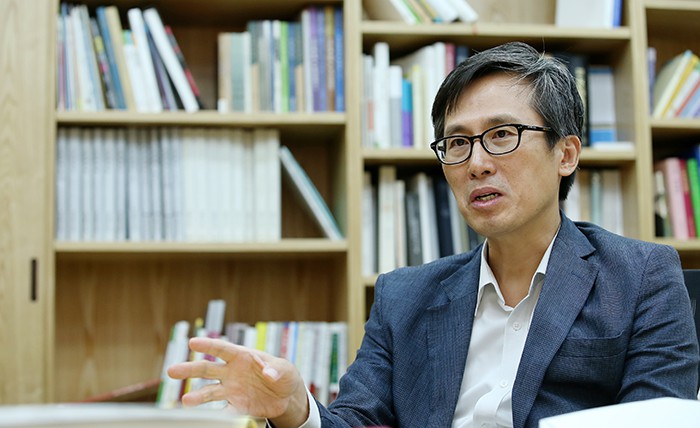
Director General of the National Hangeul Museum Moon Young-ho explains how the museum offers opportunities to people to review the history of Hangeul through the exhibits, and to collect, preserve and unearth data and historical artifacts related to Hangeul.
– What achievements have the museum made so far?
Our total number of visitors at the museum over its first year is estimated at around 450,000. Among them include 10,000 overseas visitors. I hope this number can increase. We do receive favorable comments from them. In the future, we also need to make improvements for the better.
The museum has about 15,000 artifacts at the moment that we’ve collected over the past two or three years. That number will increase. Local museums in the provinces usually have about 50,000 relics, on average. If our museum can gather 4,000 artifacts every year, we could be on par with one of them within the next two or three years. We have been gathering a wide variety of artifacts, ranging from national treasures to relics that used to be just day-to-day items. This can be seen as another accomplishment, as in the future items from the present can become precious, culturally important artifacts.
We have been finding fairly good items and have received many donations. A Korean migrant to the U.S., Leslie Song, donated some letters written in Hangeul that she had exchanged with other Koreans. These letters are valuable data, as they show the hardships undergone by Korean migrants to the U.S. in the early 1900s during the early stages of Korea’s emigration history there.
When it comes to exhibits, the museum has been striving to show the history of Hangeul through a series of exhibits so that museum-goers can learn more about the script from various points of view, from both the past and the present.
– More and more people have shown their interest in Hangeul and in Korean, thanks partially to the popularity of Korean pop music and soap operas across East Asia and elsewhere. What role can the museum play in this regard?
About 10,000 international tourists visited the museum last year. These overseas visitors and the multicultural families in Korea play an important role in globalizing Hangeul and the Korean language. Our museum has taken this into consideration and we provide special educational programs and make a special place for them. In fact, on the third floor we have the Hangeul Learning Center that targets non-Koreans. Google supported us in designing this place. Visitors can learn about the basic principles embedded in Hangeul and the basic elements of the Korean language by experiencing them first-hand.
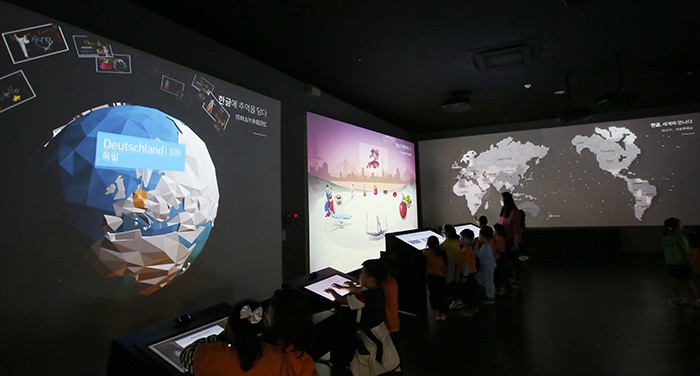
The Hangeul Learning Center on the third floor of the museum introduces Hangeul and the principles behind the invention of the letters and syllabic blocks. Google supported the museum in designing the exhibit.
– The New York Times mentioned the National Hangeul Museum as one of its must-see travel destinations for 2015 in January this year. Why do you think the museum attracts media attention from overseas?
It is very rare to find a museum for an alphabet, especially at the national level. There may be more museums like this among smaller communities, but most of those are actually more about a language or a type of printed material. This proves how difficult it is to create a museum based on an alphabet and written syllabic blocks.
Despite such difficulties, however, the reason the world has its eye on this museum is because academic circles recognize the excellence of Hangeul. In fact, Japanese scholar Noma Hideki has said, “The birth of Hangeul was a miracle of writing systems. The invention of Hangeul was a revolution of culture.”
Before the invention of Hangeul, upper classes in Joseon Korea (1392-1910) conveyed and shared knowledge through ancient Chinese characters. The invention of Hangeul changed everything. It changed their whole mindset. As written characters or syllabic blocks are the tools that contain one’s culture, the invention of Hangeul changed the whole culture, which then changed the whole world.
In 1997, UNESCO enlisted “The Proper Sounds for the Instruction of the People,” or the “Hunminjeongeum,” onto its Memory of the World International Register. I believe linguists around the globe and foreign media have taken an interest in the excellence of Hangeul. Another factor is the rising popularity of Korean pop music and soap operas around the world.
– Communication with museum visitors is probably also important. What do you consider to be the most important when it comes to communication?
Though this is a museum for a written script, I am well aware that writing and language are inseparable. So we try to focus on education about speaking, reading and writing Korean. In fact, communication is the ultimate goal of the National Hangeul Museum. We put an emphasis on communication. We manage and plan to further develop various communication programs in two parts: communication within single generations and communication between generations.
I emphasize the importance of communication to our museum staff. Whether it’s classical or modern, I tell them that we need to design programs for families so that they can read together and spend time together. These factors are reflected in all our educational programs. I always talk to our staff in the exhibits or in the resource material rooms. I ask them about how our visitors respond.
– The National Hangeul Museum has been running educational programs that target various groups of people, ranging from children and teenagers through to grown-ups and foreigners. What direction do you think the educational programs will take in the future?
Children are the most important visitors to the museum. We have a special space for them. We’ve been running educational programs for them and we will extend those programs in the future.
Unlike other museums that place their resource rooms in less visible spots, we placed our resource room in the center of the museum. We also collect more customized material, focusing on the written script and literature, as well as children‘s books. Visitors can borrow these materials, like a lending library. Unlike public libraries, however, this museum can collect data in specific sectors. The ultimate goal of the resource room is to become a library in a specialized sector. We also considered the fact that there is no public library in the neighborhood around the museum. As there are many multifunctional venues across the city, it shouldn’t be a surprise that this museum runs a library, too, and hosts concerts or performances now and then. During school vacations, we consider the needs of parents who live around here and run special programs, such as educational ones about reading or health management for children.
– What message do you hope to convey through the National Hangeul Museum?
A recent survey showed that more than 60 percent of Koreans take pride in Hangeul. Personally, I do, too. I hope the National Hangeul Museum can contribute to matching such thoughts and acts. Wouldn’t it be great if you could, at a glance, see the whole history of Hangeul as one and rethink the letters and syllabic blocks? If you could actually appreciate “The Proper Sounds for the Instruction of the People” and the hand-written letters from King Jeongjo with your own eyes, not through a textbook? The existence of a museum like this can make such a huge difference by collecting and showing all Hangeul-related artifacts in one spot and in an orderly manner. We will continue to make efforts in this regard.
Linguists from around the world predict that about half of the world’s 6,500 some odd languages will disappear in the near future. When a language disappears, its writing system and alphabet follows suit. When this is the case, the culture is then gone. There is also the possibility that Hangeul could disappear. Taking this into account, I hope that people could view Hangeul not just as a simple alphabet and set of syllabic blocks, but as a writing system that can decide the survival of a culture and their entire intellectual world.
This is why I keep talking about the cultural aspects of Hangeul, even though this is a museum about the alphabet and how they form syllabic blocks. As writing systems are the tools that convey culture, I believe our mission is to further advance and pass down Hangeul to our descendants. I hope that the Korean people have the same thought.
By Yoon Sojung, Chang Iou-chung
Photos: Jeon Han
Korea.net Staff Writers
arete@korea.kr


